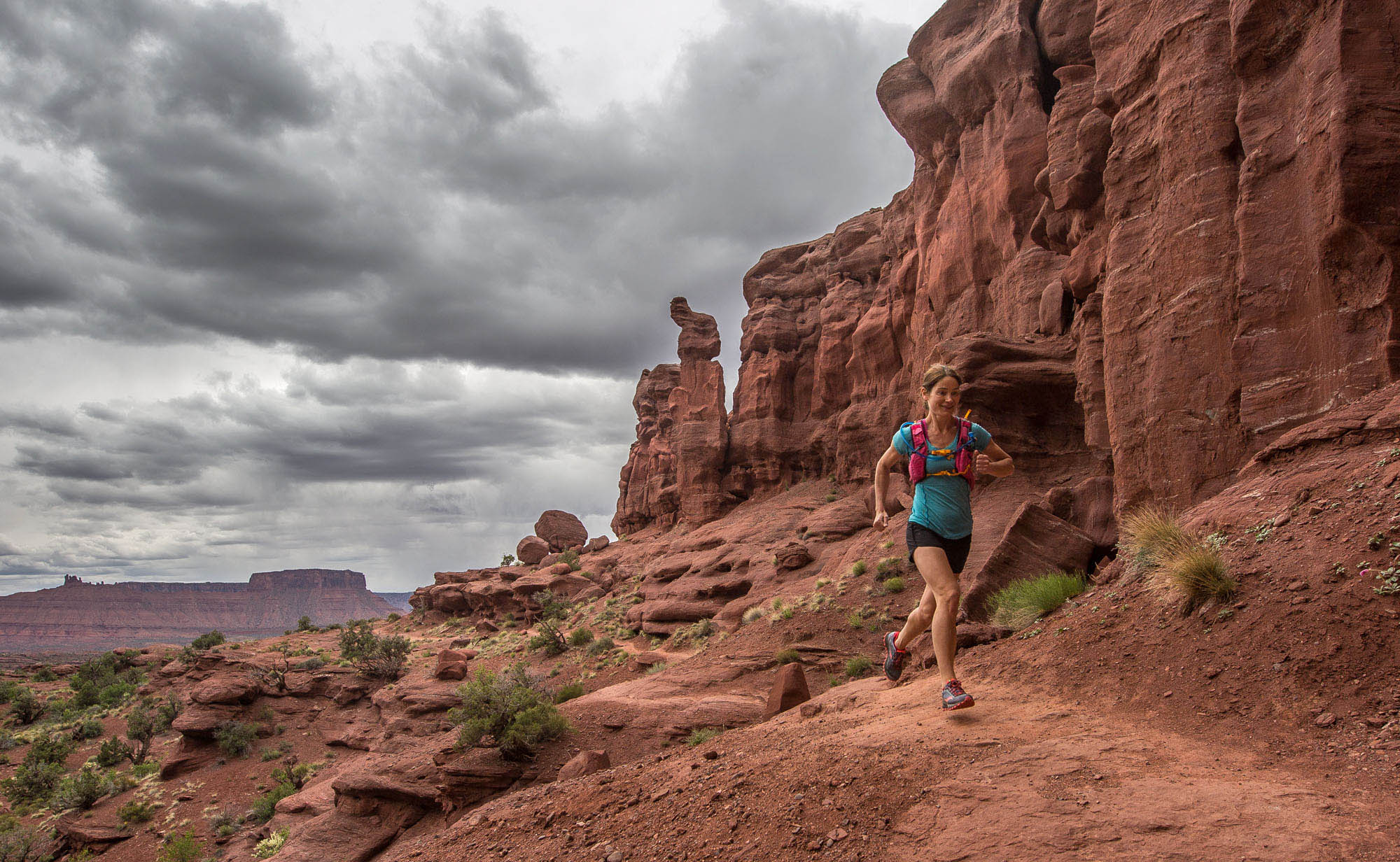
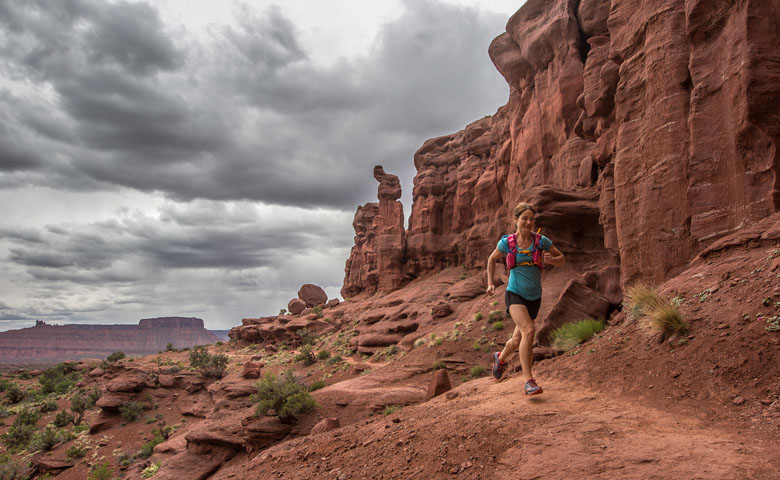
Saucony’s Peregrine has long been a favourite among trail runners, so much so that introducing changes could be seen as a risky move. With their sixth version of the Peregrine, lauded as the “brainchild of comfort and far away trails,” the Peregrine 6 is designed to be a lightweight minimalist shoe that still provides stability, traction and substantial cushioning. All trail runners would like such a resume, and many claim to, but does the Peregrine 6 deliver? I had the opportunity to try them on Utah’s sand and sandstone, as well as North Vancouver’s often muddy and always technical trails. Below we break down the Peregrine's cushioning, traction, fit and comfort, and more. To see how the Peregrine 6 stacks up, see our comparison table and article on the best trail-running shoes.
Simply picking up the Saucony Peregrine 6 was enough to convince me that it’s an exceptionally lightweight shoe. This was confirmed on my scale when I found that one shoe (women’s 8.5) weighed in at 240g (8.5 oz.). With a stack height of 21.5mm to 17.5mm, the low weight is even more remarkable. 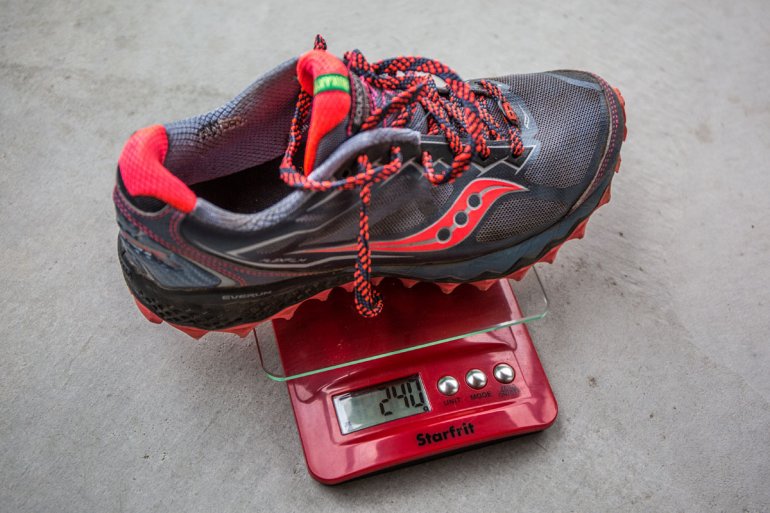
In terms of design, the toe box has been widened compared to previous versions and the upper is surprisingly airy and unencumbered. The breathable, synthetic mesh is noticeably unobstructed by toe-armour or layers of stitched material, and instead employs a “FlexFilm” laminate for structure. The laminate, as the name implies, is flexible and unrestrictive and has shown no signs of wear due to stress. While running in the Peregrine 6s for the first time, my typically warm feet welcomed the fresh air. In the rain the same breathable upper allows water to penetrate easily, meaning that feet can get wet in a stream or downpour, but drainage is impressively rapid. 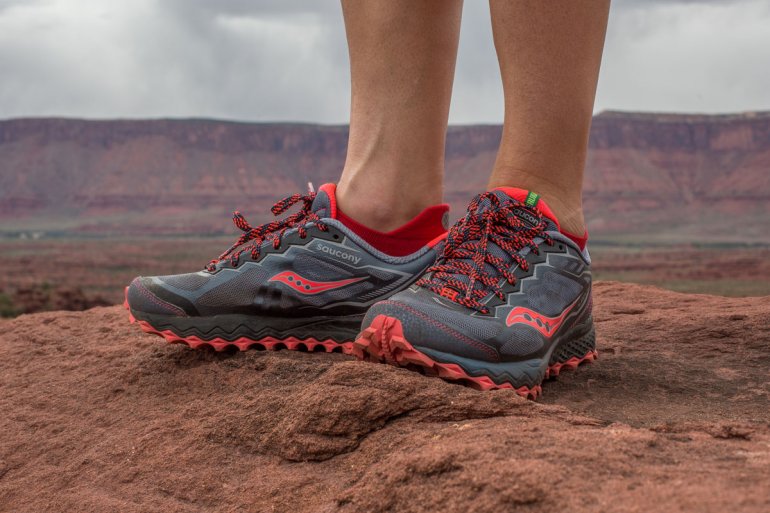
The highly flexible midsole has a 4mm drop (the difference between the heel height and the toe height), enabling a natural foot strike. As mentioned above, the stack height is 21.5 to 17.5mm, which is a substantial amount of cushioning, particularly given the lightness of the shoe. Though it contributes to comfort and allows the shoe to remain so lightweight, the material lacks denseness and makes the shoe feel a bit untrustworthy on uneven terrain. Imagine a bike tire with very little air pressure as it corners or traverses off-camber rocks or roots. The tire would fold slightly, reducing responsiveness and control. The cushioning of the Peregrine 6s is similar, such that as the grips hold their ground, the mid-sole compresses and folds allowing the foot to move independently over the grip. This means that the Peregrine 6 isn’t as desirable on highly technical trails. 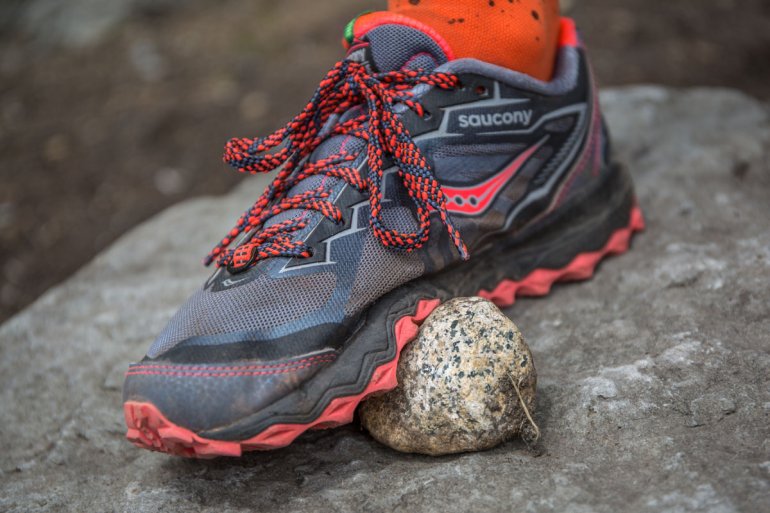
The PWRTRAC outsole, a tacky rubber, is noticeably burly and the traction is excellent. The sole is designed with directionally-opposing lugs—those on the forefoot are positioned to provide traction while running uphill, while those on the heel are angled for downhill traction. They deliver in this promise: trails covered in dust, sand, or pine needles were no issue for these shoes as the sharp lugs cut through the surface and gripped the solid rock or packed dirt below. On muddy trails complete with the slimy tree roots that typify Vancouver’s North Shore trails, the traction was equally impressive, although it falls short of the performance-oriented La Sportiva Bushido. The Peregrine's impressive traction might be in part responsible for the midsole issue described above. Though not preferred, if the shoe were to slip rather than grip, the cushioning would be less likely to fold. 
The sizing was spot on and the shoes felt like slippers immediately. The toe box has been widened making it roomy for wider feet, even those with runners’ bunions. This roominess is welcome on ultra-distance runs as it allows the feet to expand in comfort. Overall, the Peregrine 6 is an exceptionally comfortable trail-running shoe and I was never in a hurry to change into flip flops following a long run (even multiple hours). 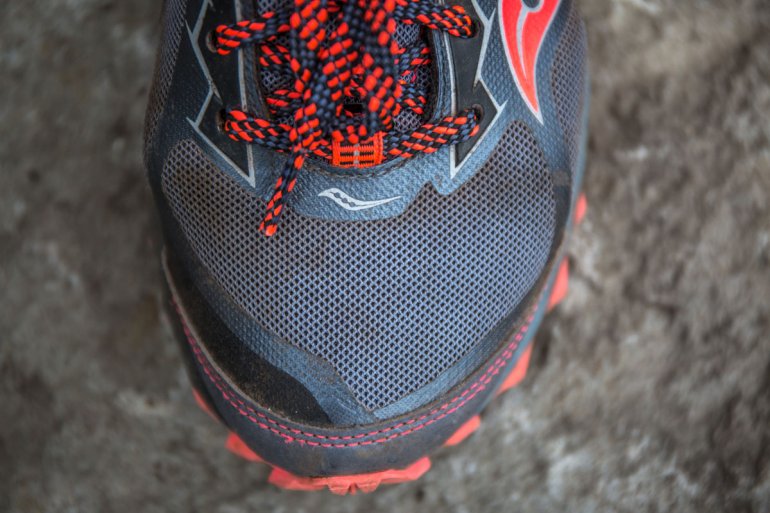


| Shoe | Price | Category | Cushioning | Weight | Drop |
|---|---|---|---|---|---|
| Saucony Peregrine 6 | $130 | Light trail / mountain | Moderate | 1 lb. 2.8 oz. | 4mm |
| Brooks Cascadia 11 | $120 | Light trail / mountain | Moderate | 1 lb. 7 oz. | 10mm |
| New Balance Leadville v3 | $125 | Light trail / mountain | Moderate | 1 lb. 5 oz. | 8mm |
| La Sportiva Bushido | $125 | Mountain / light trail | Light / Moderate | 1 lb. 5 oz. | 6mm |
| Salomon Speedcross 4 | $130 | Mountain / light trail | Moderate | 1 lb. 6 oz. | 11mm |
The Peregrine 6 stands up well against another generalist and extremely popular trail runner, the Brooks Cascadia 11, and outperforms it in most categories. The Cascadia 9s and 10s suffered from some well-known durability issues that seem somewhat resolved in the Cascadia 11s. However, in order to overcome this wearing and tearing, flexibility in the toe box was reduced, which also reduced the Cascadia’s overall comfort (we'll be getting an opinion shortly on the new Cascadia 12). The Peregrine 6, by contrast, manages to be impressively flexible yet shows no sign of wear or stress at the flex points, even after 200 miles on trails. There are some other notable differences: while the Cascadia has a 10mm drop, the Peregrine has a mere 4mm drop, making it a better choice for those who prefer a natural foot strike, but would not be recommended for those who are heavy heel strikers.
La Sportiva’s Bushido is another worthy competitor as it is slightly more aggressive, and edges out the Peregrine for traction and stability (see the full review of the Bushido). The Peregrine 6, however is more comfortable, light, and airy. While the Bushido gets weighed down and “sloshy” when wet, the Peregrine 6 sheds water quickly and remains light and nimble. It is the lightest of the three, weighing in at almost 2 ounces less than the heavy Cascadia, and 1 ounce less than the less cushioned Bushido.
If I plan to run mainly on smooth trails for more than a few hours, the Peregrine is my go-to shoe. In fact, if I could have only one trail-running shoe in my closet, it would be the Peregrine 6.